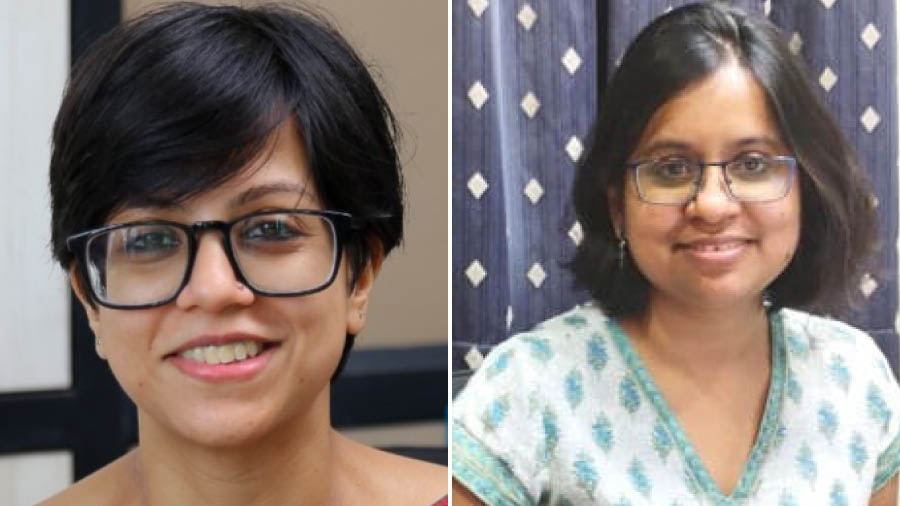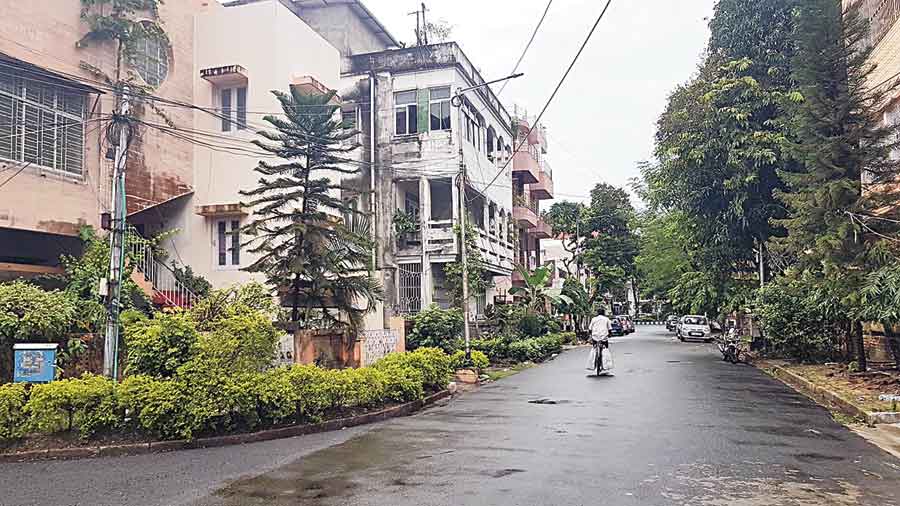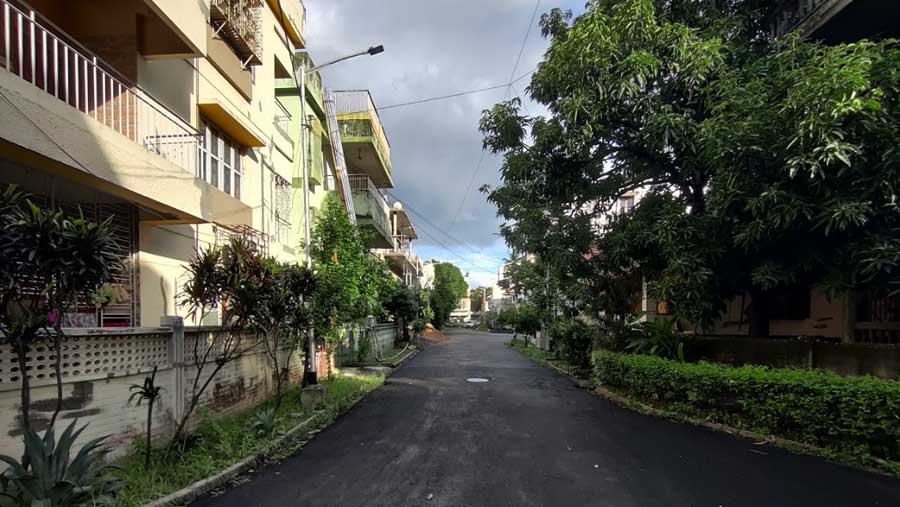Is Salt Lake a Nehruvian city? Do senior citizens make up the district’s largest demographic? What happened to the bhog that neighbours here would cook together during the Pujas? Are Salt Lake’s many blocks losing their cherished ethic of simple community living? Speaking to Dr Supurna Banerjee and Dr Anwesha Sengupta, assistant professors at the Institute of Development Studies Kolkata (IDSK), many possible answers to these questions become apparent. The two academics have joined forces to create the Salt Lake Archives — a project that offers several deep insights into the historical, political, economic and social evolution of the area, its land and people. Much of the information that Banerjee and Sengupta have unearthed was hitherto unknown, and much of their analysis makes you think of the city anew.

Dr Supurna Banerjee and Dr Anwesha Sengupta, assistant professors at the Institute of Development Studies Kolkata
My Kolkata: Tell us more about the Salt Lake Archives. Why did you think of making this archive?
Supurna Banerjee: Both Anwesha and I are interested in cities, in general. When doing our MPhil, we both opted for a course on cities. So, we have a general interest in urban history, labour, and so on. This is what got us thinking about Salt Lake and its history. Also, more particularly, we read an article by Shibaji Pratim Basu, a very well-written piece that traces 50 years of Salt Lake’s history. The article made us see that even though both of us live and work in Salt Lake, there is so much about the area that we do not know, so much that is not archived.
Anwesha Sengupta: Another thing that struck us was that very little academic work has been done on Salt Lake. There is a lot of work on Rajarhat and New Town — the new cities, the smart cities, and there is work on the colonial cities, but very little work around Salt Lake. We both teach urban studies. In particular, we teach a segment called ‘Nehruvian Cities’. So, there is very little literature around that and whatever literature there is mostly focuses on Chandigarh. But Salt Lake is also a classic example of a Nehruvian city. And as we began discussing this, we realised it had also been 50 years since Salt Lake became residential.
Banerjee: Speaking to our director (Dr. Achin Chakraborty) also helped. For the initial period of the project, IDSK even sanctioned some funds for us. This helped us move forward.
Does the archive now have a gallery? If yes, how long did it take to curate it?
Sengupta: We don’t have a permanent gallery of sorts, but in August 2022, we had an exhibition in which we showcased our collection. The archive is an ongoing project. The exhibition was more of a one-time event. It marked the 20th anniversary of IDSK and, also, 50 years of domestic residence in Salt Lake. So, the exhibition was not marking the end of our archiving process. It was just one event and we hope there will be many more.
Banerjee: With the exhibition, we also opened the archive for public use, and by that time, we had got a lot of interesting visual material of old houses.
Sengupta: We also have a photo of Salt Lake’s first house. The early residents of the house still live there. So, if anyone wants to work with our collection, they would find it is thorough. We have 50 interviews, which are, on an average, one to one-and-a-half hours long. We have photographs, and editions of three local newspapers published at varied points of time.
Banerjee: We also have maps, and one of the original plans of Salt Lake.
Who does your team comprise of?
Banerjee: Our librarian Sanjay, who helped us organise the data, and a few interns who take some of the interviews. All our interviews are catalogued and quite user-friendly.
Sengupta: We are also building the archive slowly and continuously. This year’s PhD batch at IDSK, for instance, has a fieldwork component as a part of their coursework. While assessing the well-being of the elderly, they did a survey of three places — Labony, Duttabad and DA block. They interviewed a hundred people and this data is now in our archive.
Banerjee: This is useful because Salt Lake already has a large aging population. It might have been done on a small scale, but the survey gives you statistical references for several parameters — health and quality of life, for example, but also the kinds of access that people have, across varied socio-economic classes. It is a small sample, but it is a start.
Sengupta: We also decided on this issue because all our interviews seemed to touch on two topics — one was concern about the rising Marwari population in Salt Lake, and the other worry was that the area’s younger population is shifting base. This signalled that most of the people in Salt Lake were senior citizens. We want to pick on this theme and see what old age looks like in Salt Lake. So, right now, if someone was interested in doing a sociological study on the elderly in Kolkata or in Salt Lake, they would find very useful data to rely on.

‘The first generation of Salt Lake residents were mostly government employees. Land was given to elite professionals like IAS officers, doctors, engineers, bureaucrats, teachers in government colleges. These elite professionals were not necessarily rich, but they came from an upper-middle class or middle-class background,’ said Sengupta TT Archives
How has Salt Lake changed since 1970, in terms of demography and economy?
Banerjee: The idea of change was a clear theme in almost all the interviews we did, and a larger number of people spoke about change as something negative. ‘Change’ can mean ‘decay’ in multiple ways. The emergence of outsiders — a very clear conception of a very non-middle class, non-Bengali population — becomes synonymous to decay. An aging population can also mean decay. Related to that is the sense of how a community decays. People have been saying that the pujas in the blocks were more like pujas at home — people would cook bhog together, enact dramas and collect funds. There is an anxiety around how this culture is getting lost. There is a certain nostalgia for simple community living that now seems missing.
Sengupta: This has not come out in the interviews in any central way, but, basically, the first generation of Salt Lake residents were mostly government employees. Land was given to elite professionals like IAS officers, doctors, engineers, bureaucrats, teachers in government colleges. These elite professionals were not necessarily rich, but they came from an upper-middle class or middle-class background. Their pride came from the educational capital they had. This bhadralok idea was very central to the idea of Salt Lake. The shift started from the late ’80s or ’90s when a lot of business money and non-professionals started coming in.
Banerjee: Architecturally, too, this becomes interesting. Which houses are being torn down? Where are the new ones being constructed? All this is connected. People also spoke about City Centre and the rising footfall in Salt Lake, the need for new traffic signals. But this could also be because of the age group we have spoken to.
Sengupta: Other concerns include the receding of birds and foxes in Salt Lake, as also the change in types of flora and fauna in the area.
Banerjee: We also have one fantastic interview in our archive. We managed to speak to an original resident of Salt Lake, someone who lived here before Salt Lake, well, became ‘Salt Lake’. That person remembers seeing refugee camps, tanks being made, and the area surrounded by water.
Sengupta: Though Salt Lake was mainly a wetland, there were few small villages that were removed during its making. There is a prevalent conception that when Rajarhat and New Town came up, Salt Lake did not face similar displacement. Obviously, the scale is lower, because the type of land was different, but displacement did take place. People did lose their land and properties. Some were forced to relocate to areas like Sukantanagar and Duttabad.
What are your future plans for the archive?
Sengupta: Future plans really depend on the money, something we don’t have a lot of at the moment. We are a public institution, so IDSK has very limited funds. Up until now, IDSK has given us Rs 1 lakh for the archive and Rs 50,000 for the exhibition. IDSK cannot keep funding the archive, so we need external funding. We intend to do many things but since Supurna and I both teach, we cannot give the archive our full time. We need at least one research assistant. We also need money to scan documents, since we need to digitise them. Several people with documents have contacted us, but they want these papers scanned and returned.
Are there any other upcoming projects you would like to tell us about?
Sengupta: At some point, we hope to apply for ICSSR (Indian Council of Social Science Research) funding. Also, we might not have enough material to aid someone’s PhD dissertation, but we have enough material for Master's students. It could help them write several term papers. We really want people to come and use the archive. That would also encourage us. Added to that, Supurna and I are co-writing a children’s book. The book is on tea and our tentative titles are Chaa'er Duniya and Itihashe Haatekhori.
Note: To access IDSK’s Salt Lake Archive, one must fill up a form on its website. Find the form here.

